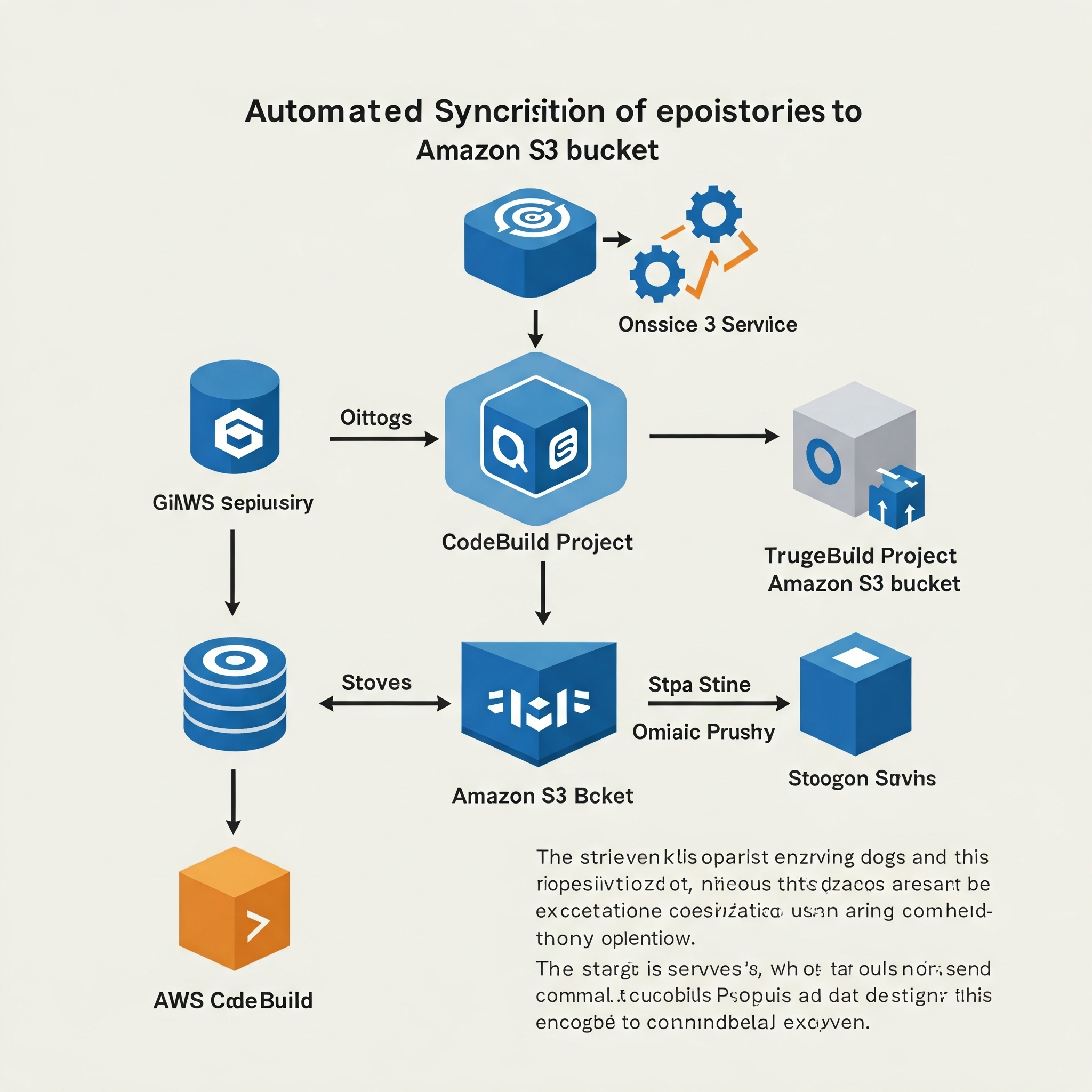Automating GitHub to S3 Sync with AWS CodeBuild for Bedrock Indexing
Recently, one of my tasks was to create an automated synchronization of a private GitHub repository with an S3 bucket to later index the content using AWS Bedrock. TLDR: AWS CodeBuild turned out to be a much simpler solution than the initially considered Lambda.
The Problem to Solve
I needed to create a mechanism that would:
- Daily fetch the content of a private GitHub repository
- Copy all files to an S3 bucket
- Enable later indexing of this content by AWS Bedrock
- Be simple to maintain and configure
Initially, I thought about AWS Lambda as a typical approach for this type of task, but I quickly discovered that this path involved many complications. Ultimately, CodeBuild proved to be a much better choice.
Why NOT Lambda?
Although AWS Lambda works great in many scenarios, in this case, I encountered several significant issues:
- Lack of Git tools in the Lambda environment – Lambda does not include Git tools by default, so I would have to add these dependencies via Lambda Layers.
- SSH connection problems – authenticating to a private repository would require configuring SSH keys in Lambda, which adds another layer of complexity.
- More code to write and maintain – implementation in Lambda would require writing significantly more code to handle repository cloning, dependency management, etc.
- Time limitations – for larger repositories, there's a chance of exceeding Lambda's execution time limit.
Why CodeBuild Was a Better Choice?
AWS CodeBuild turned out to be a much better solution for several reasons:
- Ready-made environment with necessary tools – CodeBuild includes Git, SSHand other necessary development tools by default.
- Simple configuration – only a few lines in the
buildspec.ymlfile were enough to define the entire process. - Easy integration with GitHub – CodeBuild offers native integration with GitHub repositories.
- SSH authentication support – it's easy to configure access to private repositories.
Implementation of the Solution
1. CodeBuild Project Configuration
The first step was to create a new project in AWS CodeBuild with the following settings:
- Source: No source (NO_SOURCE) – because we will clone the repository directly in the buildspec.
- Environment: Amazon Linux 2
- Service role: A role with permissions to write to S3
- Buildspec: Inline buildspec
2. SSH Authentication Configuration
To access the private repository, I needed to configure SSH authentication:
- I generated an SSH key pair dedicated to CodeBuild.
- I added the public key to the GitHub repository settings.
- I saved the private key as a secret in AWS Secrets Manager.
- I configured CodeBuild to use this secret during the build.
3. Preparing the buildspec.yml
Here is a simple buildspec.yml file that performs the entire task in just a few steps:
version: 0.2
phases:
install:
runtime-versions:
python: 3.9
pre_build:
commands:
# SSH configuration for GitHub
- mkdir -p ~/.ssh
- echo "$SSH_KEY" > ~/.ssh/id_rsa
- chmod 600 ~/.ssh/id_rsa
- ssh-keyscan github.com >> ~/.ssh/known_hosts
build:
commands:
# Cloning the repository
- git clone git@github.com:username/repository.git
# Synchronizing with S3
- aws s3 sync repository/ s3://my-bucket/repository/ --delete
post_build:
commands:
# Removing the SSH key
- rm -f ~/.ssh/id_rsa
artifacts:
files:
- appspec.yml
4. Trigger Configuration
Since the synchronization was to occur daily, I configured Amazon EventBridge to trigger the CodeBuild project daily. I also added a trigger from Amazon SNS so that the process could be manually started if needed.
Conclusions
The CodeBuild solution turned out to be:
- Much simpler to implement – instead of writing dozens of lines of code in Lambda, I configured everything in a few lines of buildspec.
- Easier to debug – CodeBuild logs are more readable and provide better insight into the process.
- More reliable – I didn't have to worry about managing dependencies and the environment.
- More flexible – I can easily extend the process with additional steps if needed.
Although this was just a proof of concept, it shows that sometimes it's worth considering alternative AWS services, even if they initially seem less obvious for a given task.
